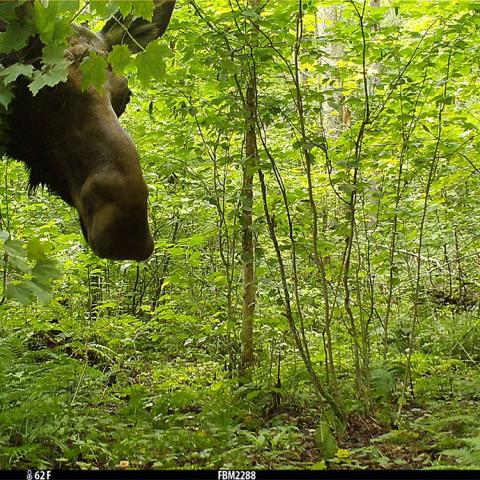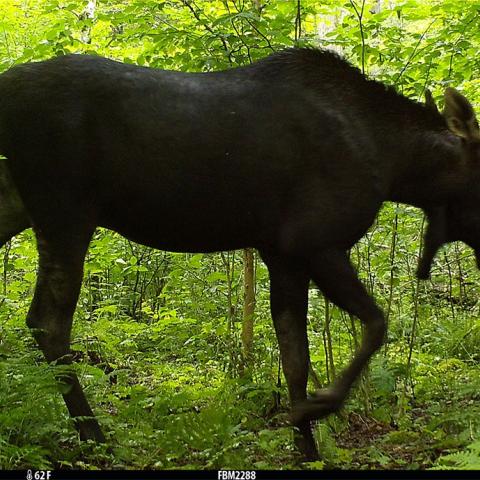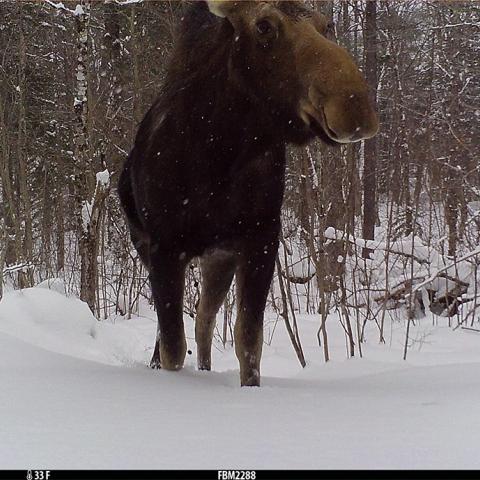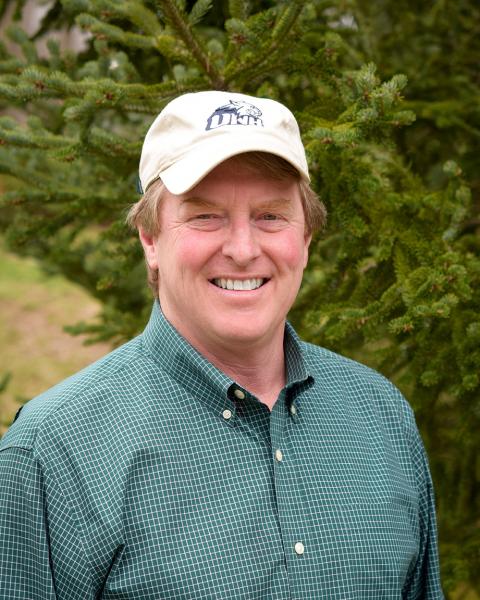Key Findings
While traditional winter aerial surveying using helicopters has been the primary method of measuring moose population density, emerging technologies such as camera trapping, drone surveying, and integrated population models could complement aerial surveying to provide more accurate estimates.
About the Co-Author

Rem Moll, Assistant Professor, UNH Natural Resources and the Environment department
Contact information: Remington.Moll@unh.edu
603-862-3054
This research first published in Alces journal.
Researchers: R. Moll, M. Poisson, D. Heit, H. Jones, P. Pekins and L. Kantar.
Despite the abundant population of moose (Alces alces) in North America, with approximately 3,000–4,000 individuals inhabiting New Hampshire, this elusive creature remains challenging to observe. However, given its significant cultural and ecological roles in the area, accurately tracking and estimating moose populations is crucial for species conservation and management. Therefore, recent research led by Remington Moll, a scientist from the New Hampshire Agricultural Experiment Station, has evaluated emerging technologies that may improve population calculations of this animal introvert. View Aerial/Infrared Image Slider
Moll and his team, comprising scientists from the New Hampshire Fish and Game Department and the Maine Department of Inland Fisheries and Wildlife, assessed 89 moose population studies to determine the most effective method for estimating population and density. They found that aerial surveying and "sightability," which involves identifying and counting moose that were present but not detected, were the most commonly used approaches. However, assessments that did not account for "sightability" tended to underestimate moose population density, primarily due to the animal's vast range, which makes estimating its density challenging.
Moll and his coauthors believe that these new avenues of study could offer the best possible information on moose to inform their management and conservation.
“Accounting for sightability involves formally adjusting estimates to count moose that were present but not detected,” described Moll. “Although some studies make this adjustment, almost half did not, which suggests that many estimates might be undercounts.”
“We also found that moose, in general, are a low-density species, with some of the highest population densities in the world located in Maine,” he added.
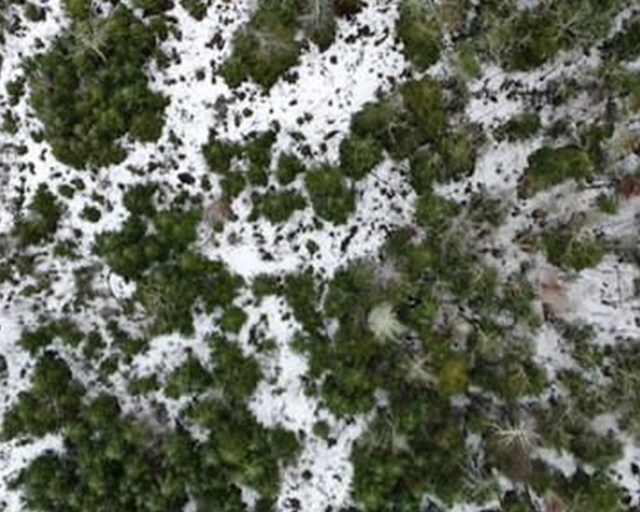

Images taken by drone (approx. 250 feet in height) showing the study area in northern New Hampshire. Photo credit: Franklin Sullivan
Camera trap images of moose.
This material is based upon work supported by the NH Agricultural Experiment Station, through joint funding of the National Institute of Food and Agriculture, U.S. Department of Agriculture, under award number 1024128, and the state of New Hampshire. It was also supported by New Hampshire Fish and Game and Maine Department of Inland Fisheries and Wildlife. This work is co-authored by Remington Moll, Mairi Poisson, David Heit, Henry Jones, Peter Pekins and Lee Kantar.

